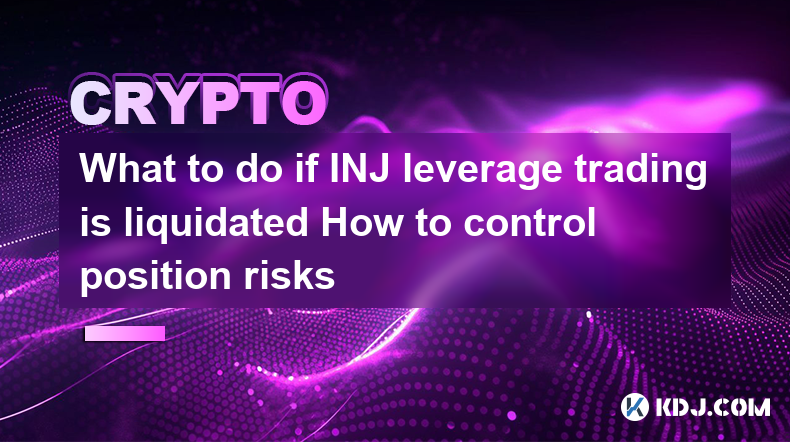-
 Bitcoin
Bitcoin $107,770.4059
-1.97% -
 Ethereum
Ethereum $2,493.7356
-3.93% -
 Tether USDt
Tether USDt $1.0002
-0.02% -
 XRP
XRP $2.2203
-2.55% -
 BNB
BNB $652.1421
-1.54% -
 Solana
Solana $146.9193
-3.62% -
 USDC
USDC $1.0002
0.02% -
 TRON
TRON $0.2838
-0.55% -
 Dogecoin
Dogecoin $0.1628
-5.62% -
 Cardano
Cardano $0.5703
-4.75% -
 Hyperliquid
Hyperliquid $38.6498
-4.85% -
 Sui
Sui $2.8450
-5.48% -
 Bitcoin Cash
Bitcoin Cash $489.1135
-1.87% -
 Chainlink
Chainlink $13.0730
-4.91% -
 UNUS SED LEO
UNUS SED LEO $9.0733
0.42% -
 Avalanche
Avalanche $17.7084
-4.89% -
 Stellar
Stellar $0.2381
-2.40% -
 Toncoin
Toncoin $2.7521
-3.88% -
 Shiba Inu
Shiba Inu $0.0...01134
-4.70% -
 Litecoin
Litecoin $86.6015
-3.52% -
 Hedera
Hedera $0.1529
-4.15% -
 Monero
Monero $314.6637
-0.97% -
 Dai
Dai $0.9999
-0.01% -
 Polkadot
Polkadot $3.3457
-5.84% -
 Ethena USDe
Ethena USDe $1.0001
-0.01% -
 Bitget Token
Bitget Token $4.3968
-3.94% -
 Uniswap
Uniswap $6.9333
-9.10% -
 Pepe
Pepe $0.0...09620
-5.08% -
 Aave
Aave $264.0087
-5.99% -
 Pi
Pi $0.4674
-4.92%
What to do if INJ leverage trading is liquidated How to control position risks
After liquidation in INJ leverage trading, assess the situation, reevaluate your strategy, replenish your account, and adjust risk management to prevent future liquidations.
May 02, 2025 at 12:08 am

Introduction to INJ Leverage Trading
Injective Protocol (INJ) is a decentralized finance (DeFi) platform that offers leverage trading on various cryptocurrencies. Leverage trading allows traders to amplify their potential returns by borrowing funds to increase their trading position. However, with the potential for higher returns comes the risk of liquidation, where a trader's position is forcibly closed due to insufficient margin. Understanding how to manage and control these risks is crucial for any trader engaging in leverage trading with INJ.
Understanding Liquidation in INJ Leverage Trading
Liquidation occurs when the value of a trader's position falls below the maintenance margin level set by the trading platform. This is a protective mechanism designed to ensure that the trader's losses do not exceed the borrowed funds. When a position is liquidated, the trader's open position is closed, and any remaining margin is used to cover the losses.
To illustrate, if a trader opens a leveraged position on INJ with a 10x leverage and the price moves against them, the position may be liquidated if the losses reach a certain threshold. The exact threshold depends on the platform's rules and the initial margin deposited by the trader.
Steps to Take After Liquidation
If your INJ leverage trading position is liquidated, here are the steps you should take:
Assess the Situation: Review your trading account to understand the exact reason for the liquidation. Check the liquidation price and the remaining balance in your account.
Reevaluate Your Strategy: Analyze what went wrong with your trading strategy. Did you use too much leverage? Was your risk management inadequate?
Replenish Your Account: If you wish to continue trading, you may need to deposit more funds into your account to cover the losses and meet the minimum margin requirements.
Adjust Your Risk Management: Implement stricter risk management rules, such as setting tighter stop-loss orders or reducing the amount of leverage used.
Controlling Position Risks in INJ Leverage Trading
Effective risk management is essential for successful leverage trading. Here are several strategies to help control position risks:
Setting Stop-Loss Orders
A stop-loss order is an order placed with a broker to buy or sell once the stock reaches a certain price. This can help limit potential losses on a position. For INJ leverage trading, setting a stop-loss order can prevent a position from being liquidated by automatically closing it before the price reaches the liquidation level.
Determine the Stop-Loss Level: Calculate the stop-loss level based on your risk tolerance and the volatility of INJ. A common approach is to set the stop-loss at a level that limits your potential loss to a certain percentage of your trading capital.
Place the Stop-Loss Order: Use the trading platform's interface to place a stop-loss order at the calculated level. Ensure that the order is set correctly and will be executed if the price reaches the specified level.
Using Lower Leverage
Lower leverage can significantly reduce the risk of liquidation. While higher leverage can amplify potential returns, it also increases the risk of significant losses. By using lower leverage, you can maintain a larger margin buffer, reducing the likelihood of liquidation.
Choose Appropriate Leverage: Select a leverage ratio that aligns with your risk tolerance and trading strategy. For example, instead of using 10x leverage, consider using 2x or 5x leverage.
Monitor Margin Requirements: Regularly check the margin requirements for your chosen leverage level to ensure you have sufficient funds to cover potential losses.
Diversifying Your Portfolio
Diversification can help spread risk across different assets, reducing the impact of a single position's liquidation on your overall portfolio. Instead of focusing solely on INJ, consider trading other cryptocurrencies or using different trading strategies.
Select Diverse Assets: Choose a mix of assets with varying levels of volatility and correlation. This can help balance your risk exposure.
Allocate Capital Wisely: Distribute your trading capital across different assets and strategies to minimize the impact of any single position's liquidation.
Regularly Monitoring Your Positions
Active monitoring of your trading positions is crucial for managing risks effectively. By keeping a close eye on market movements and your position's performance, you can make timely adjustments to prevent liquidation.
Use Trading Alerts: Set up alerts on your trading platform to notify you when your position reaches certain price levels or when the margin level approaches the liquidation threshold.
Review Market Conditions: Stay informed about market trends and news that could impact the price of INJ. Adjust your positions accordingly to mitigate risks.
Implementing a Risk Management Plan
A comprehensive risk management plan is essential for successful leverage trading. This plan should include clear guidelines on leverage usage, stop-loss levels, position sizing, and regular monitoring.
Define Risk Tolerance: Determine the maximum percentage of your trading capital that you are willing to risk on a single trade.
Set Position Sizes: Calculate the appropriate position size based on your risk tolerance and the leverage used. Ensure that the potential loss on any single position does not exceed your risk tolerance.
Establish Stop-Loss Rules: Set clear rules for placing stop-loss orders, including the method for calculating the stop-loss level and the conditions under which the order should be adjusted.
Regular Review and Adjustment: Continuously review and adjust your risk management plan based on your trading performance and changing market conditions.
Frequently Asked Questions
Q: Can I recover funds after a liquidation in INJ leverage trading?
A: Once a position is liquidated, the funds used to cover the losses are typically not recoverable. However, any remaining balance in your account after liquidation can be used for future trading. It's important to manage your risk carefully to avoid liquidation in the first place.
Q: How does the liquidation price in INJ leverage trading get calculated?
A: The liquidation price is calculated based on the initial margin, the leverage used, and the maintenance margin requirement set by the trading platform. It is the price at which the position's losses would equal the initial margin, triggering the liquidation.
Q: Is there a way to avoid liquidation in INJ leverage trading?
A: While there is no foolproof way to avoid liquidation, implementing strict risk management practices, such as using lower leverage, setting stop-loss orders, and regularly monitoring your positions, can significantly reduce the risk of liquidation.
Q: How often should I review my INJ leverage trading positions?
A: It is recommended to review your trading positions at least daily, especially if you are using high leverage. Additionally, setting up real-time alerts can help you stay informed about significant price movements and margin levels.
Disclaimer:info@kdj.com
The information provided is not trading advice. kdj.com does not assume any responsibility for any investments made based on the information provided in this article. Cryptocurrencies are highly volatile and it is highly recommended that you invest with caution after thorough research!
If you believe that the content used on this website infringes your copyright, please contact us immediately (info@kdj.com) and we will delete it promptly.
- Bitcoin's Pattern Break: Are HODLers the Key to the Next Surge?
- 2025-07-04 18:50:12
- Bitcoin Price, Trump's Bill, and the $150K Dream: A NYC Take
- 2025-07-04 19:50:12
- Ethereum, LILPEPE, and the July Bounce: Will Pepe Steal ETH's Thunder?
- 2025-07-04 19:10:12
- Binance Institutional Loans: Unlocking 4x Leverage and Zero Interest for Whales
- 2025-07-04 19:15:12
- Bitcoin Bull Run: Analysts Eye Peak in Late 2025?
- 2025-07-04 19:20:13
- Pepe Indicators, Bullish Forecast: Can the Meme Coin Rally?
- 2025-07-04 19:25:12
Related knowledge

How to customize USDT TRC20 mining fees? Flexible adjustment tutorial
Jun 13,2025 at 01:42am
Understanding USDT TRC20 Mining FeesMining fees on the TRON (TRC20) network are essential for processing transactions. Unlike Bitcoin or Ethereum, where miners directly validate transactions, TRON uses a delegated proof-of-stake (DPoS) mechanism. However, users still need to pay bandwidth and energy fees, which are collectively referred to as 'mining fe...

USDT TRC20 transaction is stuck? Solution summary
Jun 14,2025 at 11:15pm
Understanding USDT TRC20 TransactionsWhen users mention that a USDT TRC20 transaction is stuck, they typically refer to a situation where the transfer of Tether (USDT) on the TRON blockchain has not been confirmed for an extended period. This issue may arise due to various reasons such as network congestion, insufficient transaction fees, or wallet-rela...

How to cancel USDT TRC20 unconfirmed transactions? Operation guide
Jun 13,2025 at 11:01pm
Understanding USDT TRC20 Unconfirmed TransactionsWhen dealing with USDT TRC20 transactions, it’s crucial to understand what an unconfirmed transaction means. An unconfirmed transaction is one that has been broadcasted to the blockchain network but hasn’t yet been included in a block. This typically occurs due to low transaction fees or network congestio...

How to check USDT TRC20 balance? Introduction to multiple query methods
Jun 21,2025 at 02:42am
Understanding USDT TRC20 and Its ImportanceUSDT (Tether) is one of the most widely used stablecoins in the cryptocurrency market. It exists on multiple blockchain networks, including TRC20, which operates on the Tron (TRX) network. Checking your USDT TRC20 balance accurately is crucial for users who hold or transact with this asset. Whether you're sendi...

What to do if USDT TRC20 transfers are congested? Speed up trading skills
Jun 13,2025 at 09:56am
Understanding USDT TRC20 Transfer CongestionWhen transferring USDT TRC20, users may occasionally experience delays or congestion. This typically occurs due to network overload on the TRON blockchain, which hosts the TRC20 version of Tether. Unlike the ERC20 variant (which runs on Ethereum), TRC20 transactions are generally faster and cheaper, but during...

The relationship between USDT TRC20 and TRON chain: technical background analysis
Jun 12,2025 at 01:28pm
What is USDT TRC20?USDT TRC20 refers to the Tether (USDT) token issued on the TRON blockchain using the TRC-20 standard. Unlike the more commonly known ERC-20 version of USDT (which runs on Ethereum), the TRC-20 variant leverages the TRON network's infrastructure for faster and cheaper transactions. The emergence of this version came as part of Tether’s...

How to customize USDT TRC20 mining fees? Flexible adjustment tutorial
Jun 13,2025 at 01:42am
Understanding USDT TRC20 Mining FeesMining fees on the TRON (TRC20) network are essential for processing transactions. Unlike Bitcoin or Ethereum, where miners directly validate transactions, TRON uses a delegated proof-of-stake (DPoS) mechanism. However, users still need to pay bandwidth and energy fees, which are collectively referred to as 'mining fe...

USDT TRC20 transaction is stuck? Solution summary
Jun 14,2025 at 11:15pm
Understanding USDT TRC20 TransactionsWhen users mention that a USDT TRC20 transaction is stuck, they typically refer to a situation where the transfer of Tether (USDT) on the TRON blockchain has not been confirmed for an extended period. This issue may arise due to various reasons such as network congestion, insufficient transaction fees, or wallet-rela...

How to cancel USDT TRC20 unconfirmed transactions? Operation guide
Jun 13,2025 at 11:01pm
Understanding USDT TRC20 Unconfirmed TransactionsWhen dealing with USDT TRC20 transactions, it’s crucial to understand what an unconfirmed transaction means. An unconfirmed transaction is one that has been broadcasted to the blockchain network but hasn’t yet been included in a block. This typically occurs due to low transaction fees or network congestio...

How to check USDT TRC20 balance? Introduction to multiple query methods
Jun 21,2025 at 02:42am
Understanding USDT TRC20 and Its ImportanceUSDT (Tether) is one of the most widely used stablecoins in the cryptocurrency market. It exists on multiple blockchain networks, including TRC20, which operates on the Tron (TRX) network. Checking your USDT TRC20 balance accurately is crucial for users who hold or transact with this asset. Whether you're sendi...

What to do if USDT TRC20 transfers are congested? Speed up trading skills
Jun 13,2025 at 09:56am
Understanding USDT TRC20 Transfer CongestionWhen transferring USDT TRC20, users may occasionally experience delays or congestion. This typically occurs due to network overload on the TRON blockchain, which hosts the TRC20 version of Tether. Unlike the ERC20 variant (which runs on Ethereum), TRC20 transactions are generally faster and cheaper, but during...

The relationship between USDT TRC20 and TRON chain: technical background analysis
Jun 12,2025 at 01:28pm
What is USDT TRC20?USDT TRC20 refers to the Tether (USDT) token issued on the TRON blockchain using the TRC-20 standard. Unlike the more commonly known ERC-20 version of USDT (which runs on Ethereum), the TRC-20 variant leverages the TRON network's infrastructure for faster and cheaper transactions. The emergence of this version came as part of Tether’s...
See all articles

























































































